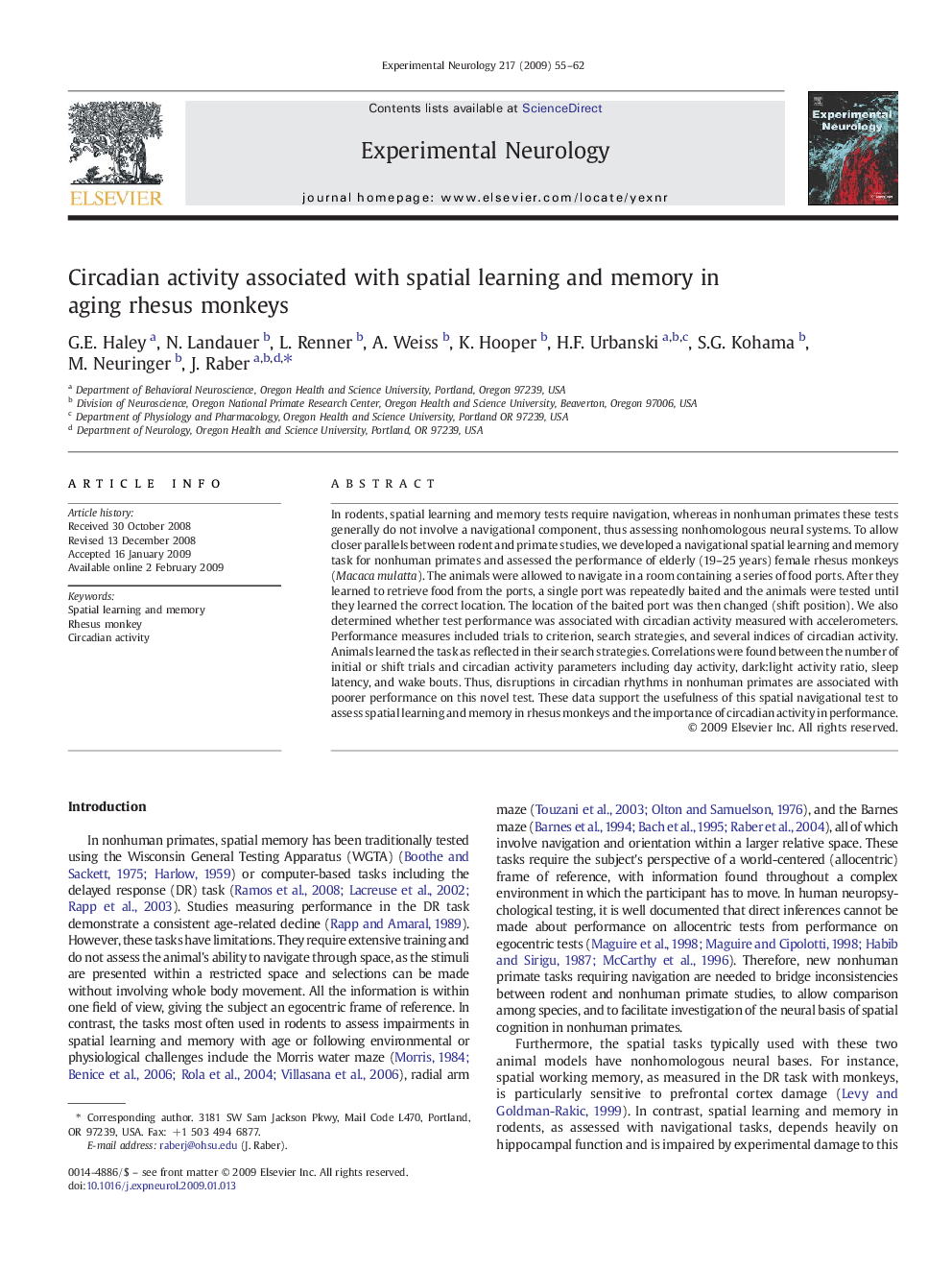| Article ID | Journal | Published Year | Pages | File Type |
|---|---|---|---|---|
| 6019411 | Experimental Neurology | 2009 | 8 Pages |
Abstract
In rodents, spatial learning and memory tests require navigation, whereas in nonhuman primates these tests generally do not involve a navigational component, thus assessing nonhomologous neural systems. To allow closer parallels between rodent and primate studies, we developed a navigational spatial learning and memory task for nonhuman primates and assessed the performance of elderly (19-25Â years) female rhesus monkeys (Macaca mulatta). The animals were allowed to navigate in a room containing a series of food ports. After they learned to retrieve food from the ports, a single port was repeatedly baited and the animals were tested until they learned the correct location. The location of the baited port was then changed (shift position). We also determined whether test performance was associated with circadian activity measured with accelerometers. Performance measures included trials to criterion, search strategies, and several indices of circadian activity. Animals learned the task as reflected in their search strategies. Correlations were found between the number of initial or shift trials and circadian activity parameters including day activity, dark:light activity ratio, sleep latency, and wake bouts. Thus, disruptions in circadian rhythms in nonhuman primates are associated with poorer performance on this novel test. These data support the usefulness of this spatial navigational test to assess spatial learning and memory in rhesus monkeys and the importance of circadian activity in performance.
Related Topics
Life Sciences
Neuroscience
Neurology
Authors
G.E. Haley, N. Landauer, L. Renner, A. Weiss, K. Hooper, H.F. Urbanski, S.G. Kohama, M. Neuringer, J. Raber,
